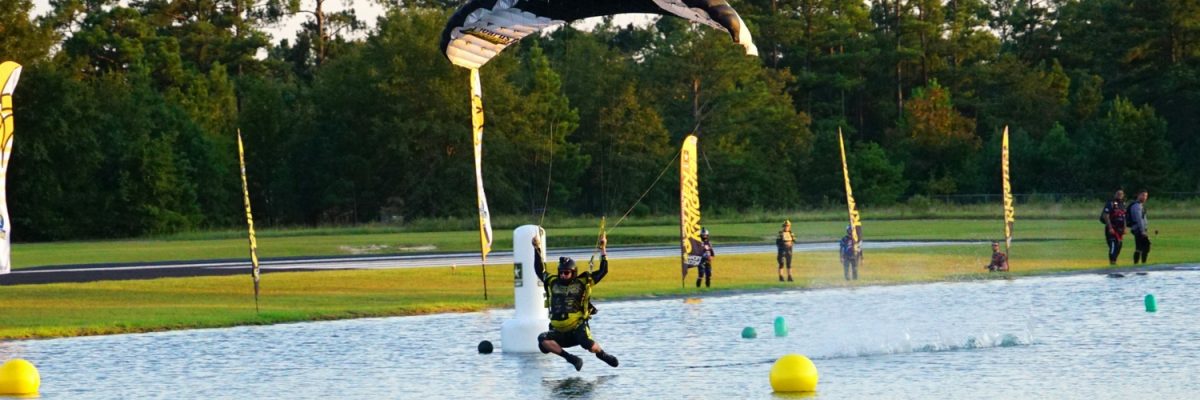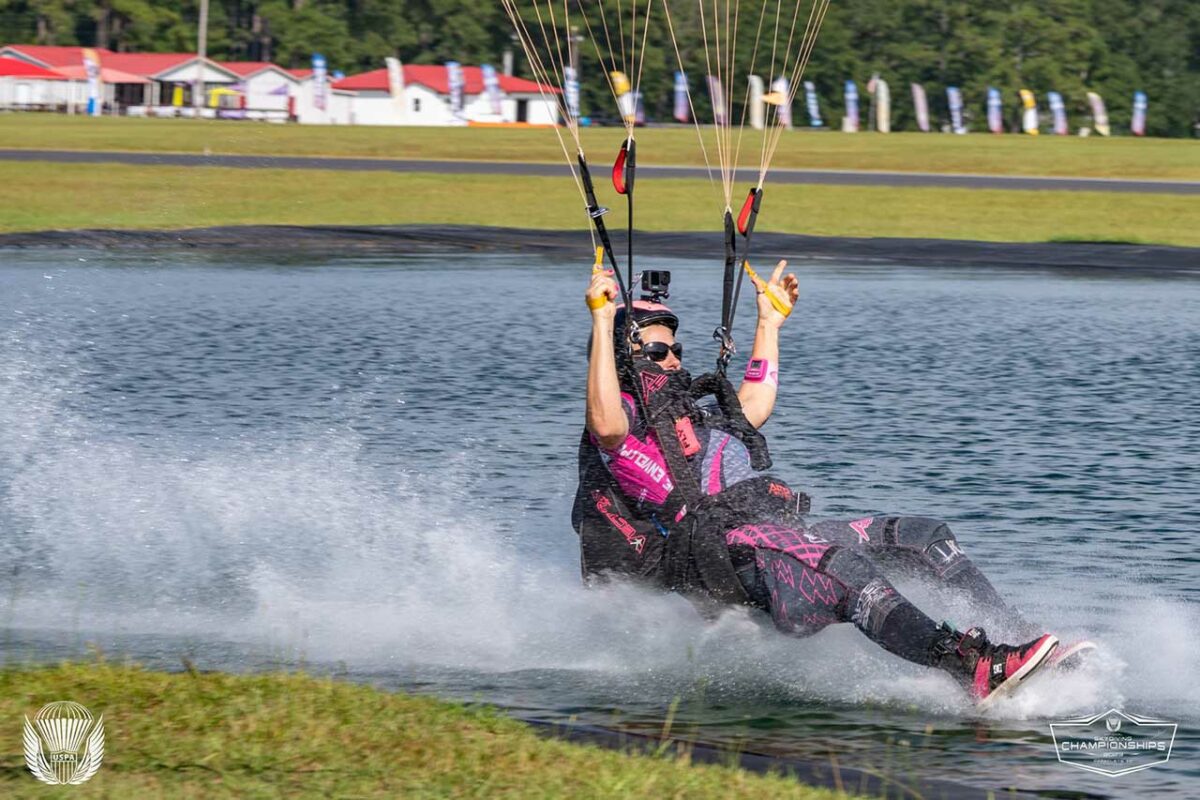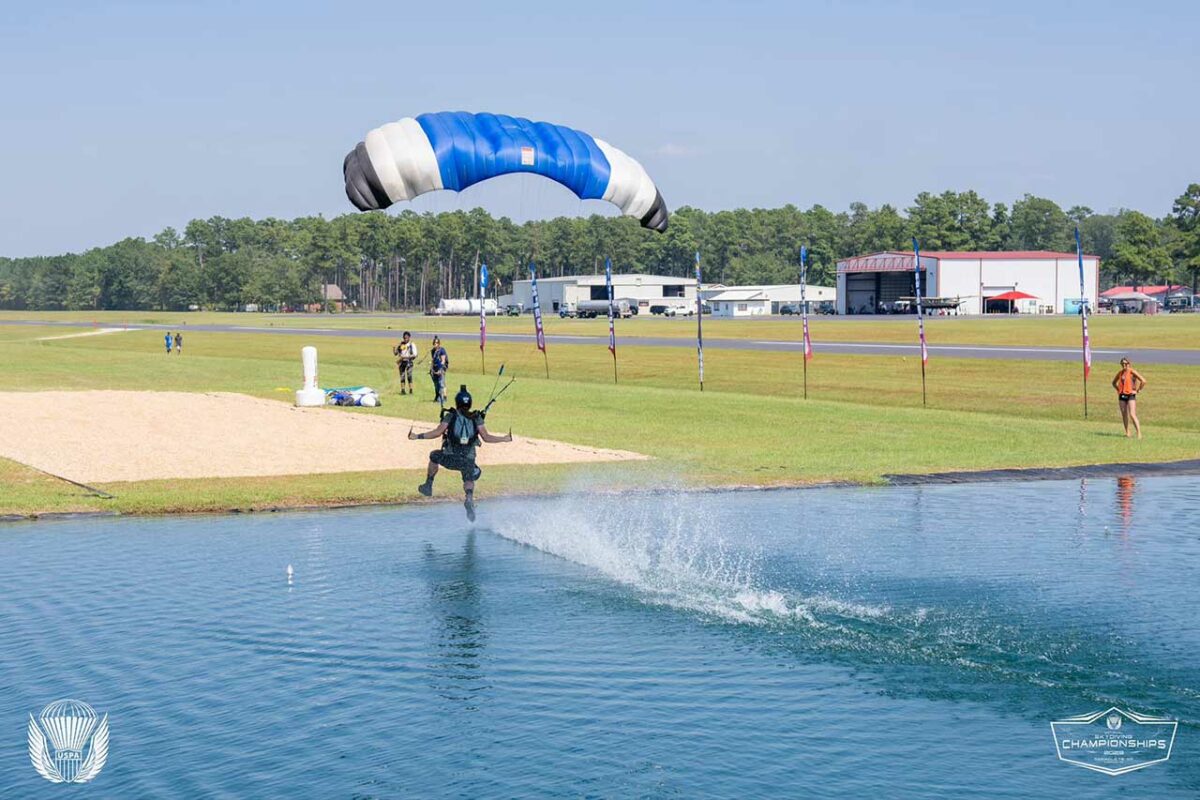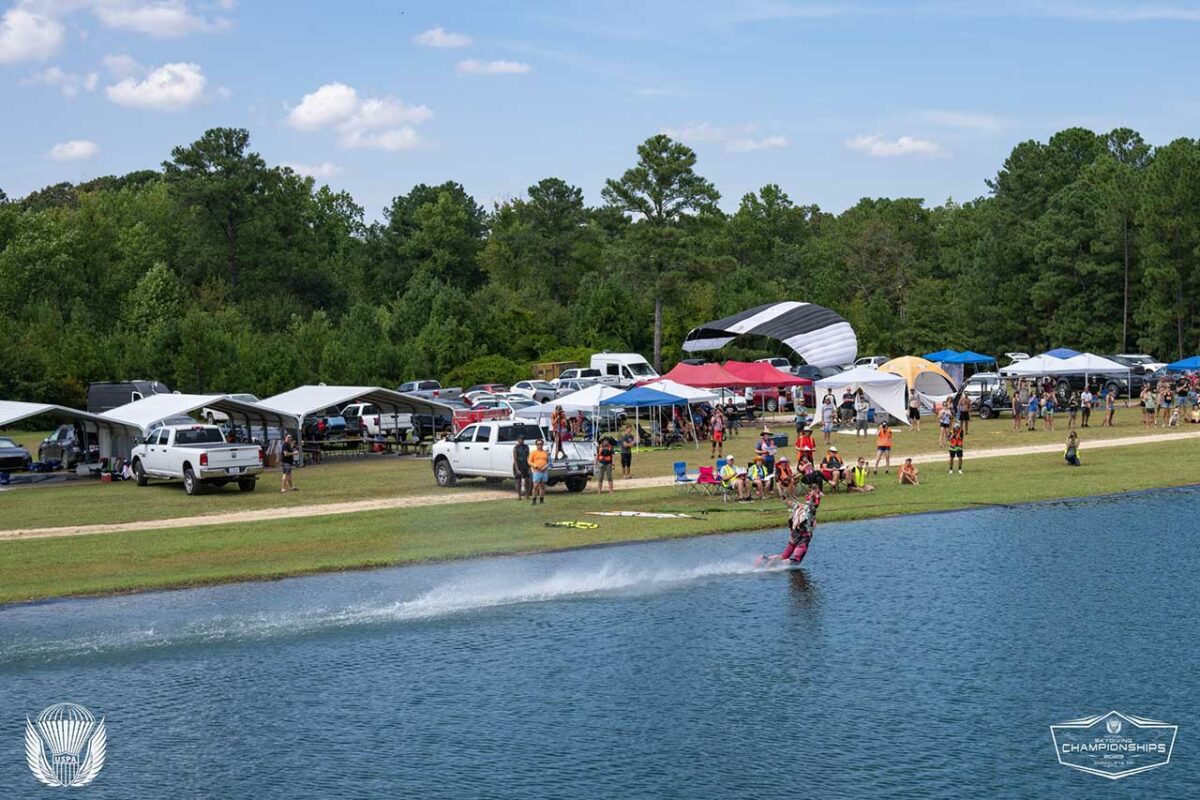
Swooping In Skydiving: What You Should Know
Thursday, July 18, 2024
- Team FlyXP
- 7/18/24
- 0
- Fun Jumpers, Skydiving
Swooping in skydiving is just about as cool as it sounds. It is one of the most electrifying maneuvers in the world of skydiving; where speed, precision and style come together to create an eyecatching, adrenaline-pumping experience.
Whether you’re considering learning how to swoop, or just curious about the sport of parachute swooping, stay right here! We’ll take a closer look at the skydive swooping basics, how to swoop, where to find swooping lessons or competitions, and some important safety considerations.

What Does Swooping Mean in Skydiving?
Swooping is a skydiving maneuver that is performed while under the parachute – or canopy – and is a specific discipline nestled under the canopy piloting category in skydiving.
What is a swooping maneuver? A skydiving swooping maneuver is performed to generate lift under canopy while increasing forward speed – in a swooping motion – creating an awesome “swooshing” sound as they approach the ground. *it’s kind of one of the best sounds in the world*
How Do You Swoop When Skydiving?
Before we begin, we must say that while we are here to provide as much information about swooping as possible, we do not recommend just reading a blog article before attempting to swoop for-real, for-real.
Seeking out coaching from a canopy piloting professional is the only appropriate way to learn how to swoop.
Swooping requires high-performance canopies, which tend to be smaller and have more curvature to their design in order to make a steeper dive and cut through the wind.
You’ll want to consider your wing loading when choosing a parachute. The wing loading is the skydiver’s exit weight (your body weight + gear) in relation to the surface area of the parachute you are jumping. A higher wing loading means a faster descent rate and a more responsive canopy, while a lower wing loading results in a slower descent rate.
One of the biggest problems within the skydiving community is skydivers downsizing before they are ready. Downsizing is when skydivers go from a bigger parachute to a smaller one as they gain control of their canopy skills. Think of it as the difference between driving a school bus versus a sports car. We want to urge the importance of seeking advice about downsizing safely from your skydiving instructor who knows your skills best AND an experienced canopy coach. This decision could be dire.
As skydivers set up for their swooping landing pattern, they will start by slightly stalling the parachute, decreasing the forward motion momentarily in order to make the canopy dive. To perform a skydive swoop, the skydiver must use a combination of toggle inputs and harness turns to turn the parachute quickly and build speed, then changing the pitch of the canopy to make it glide across the ground or pond.
As swoopers progress, they can add a bit of style to the swoop by dragging the tip of their foot in the water, performing turns, and other impressive movements with their bodies.

Where Can I Learn to Swoop?
Before even attempting to swoop you must first have your skydiving license and second, have tons of experience mastering your canopy piloting skills under normal conditions as far as landing accuracy and control in low winds, medium winds, and high winds.
Not every skydiver is a swooper and swooping is not for every skydiver. Swooping is a very dangerous sport and should only be attempted by highly experienced skydivers with loads of canopy piloting training. It requires perfect depth perception, impeccable body awareness, and an abundance of humility.
Training for swooping starts by attending a canopy piloting course hosted by a professional canopy pilot, or organization like Superior Flight Solutions. Here at Skydive Paraclete XP, we have a slew of world champion canopy pilots who host canopy courses right here on-site ready to teach you how to swoop (if they deem you ready, of course) at our very own swoop pond.
Is Swooping Safe?
Skydiving, in general, is an extreme sport that comes with risk and should be taken very seriously. Swooping, while exhilarating, comes with even greater risk.
Most skydiving accidents and fatalities are caused by experienced skydivers who are pushing the limits and make an error in judgment while landing a perfectly functioning parachute, e.g. making intentional turns too low to the ground when trying to swoop.
Skydiving Swooping Competitions
Canopy piloting is one of the most competitive disciplines within the skydiving world. These competitions take place over a body of water commonly known as a swoop pond, that is marked with floating buoys that competitors must navigate through with precision.
Swooping competitions are a feast for the senses! Imagine dramatic entrances, freestyle poses, and the unmistakable swooshing sounds of a canopy speeding by. Luckily, you can watch one of these competitions right here at Skydive Paraclete XP as we host the 2024 USPA Canopy Piloting National Championships August 29th through September 4th. Our competitors have been training hard and are ready to show the judges what they’ve got!

Here are the various disciplines that make up the swooping competition scene:
- Speed: Navigate through the course as fast as possible without bumping into any buoys.
- Accuracy: Land as close as possible to the target on the opposite side of the pond.
- Distance: Achieve the longest horizontal distance without touching anything.
- Freestyle: Show off your swoop landing tricks
- Superman: Lean forward with a straight body.
- Switchblade: Switch both toggles to one hand.
- Ghostrider: Release both toggles.
- Cowboy: Touch the water with one hand.
- Blindman: Perform a 180-degree turn.
- Miracle Man: Execute a 360-degree turn.
- Wingover: Touch the canopy to the water while grabbing one leg.
Each discipline demands skill, precision, and flair – making swooping competitions a highlight in the skydiving community.
Ready to dive into your swoop progression? Start by getting your skydiving license OR, if you already have your license, sign up for one of our canopy courses right here at Skydive Paraclete XP! Blue skies.
Ready to witness some of the most mind-blowing parachuting tricks you’ve ever seen?
Check out this incredible video with highlights of the 2017 Swoop Freestyle FAI World Championships in Copenhagen:
Copyright © 2025, Skydive Paraclete XP, All Rights Reserved.
DropZone Web Design & Marketing by Beyond Marketing, LLC
